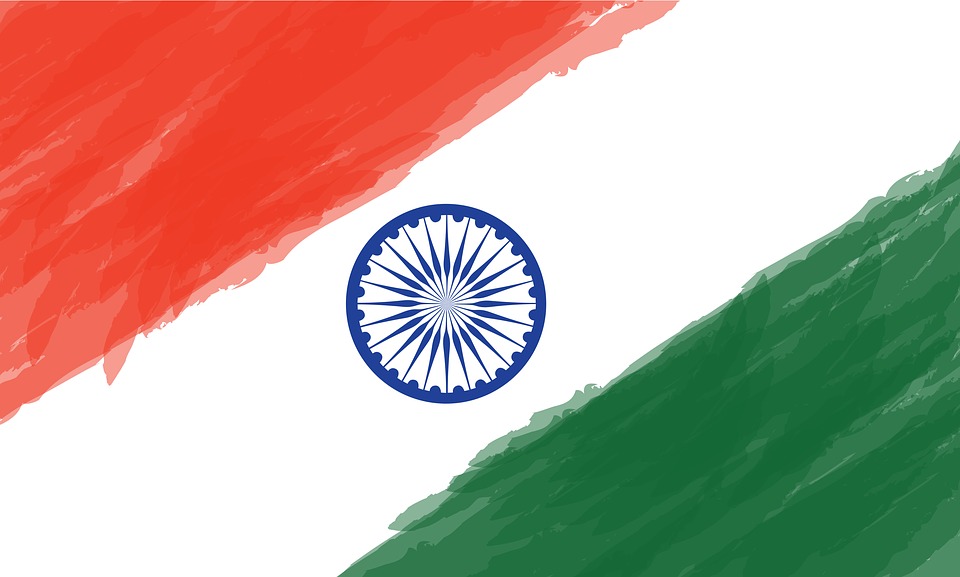NEW DELHI – Historians of India have revealed many different names of India. Most of us know India as ‘Bharat’ or ‘Hindustan’ but on exploring the history of India, we come to know that people of different ages called India by several different names.
How many different names of India do you know? Well, you might have heard of few names of India while studying History in your school or college days. But still, there are many other names of India which you haven’t heard of. Reading below, you will come to know about 24 different names of India from different eras and societies. Also, the story associated with these names has also been mentioned below. So, know about other names of India and increase your knowledge as well as an understanding of the heritage of India.
Jambudvipa
Jambudvipa stands for “the land of Jambu trees” and it has been mentioned in many religious texts of Sanathan Dharma. Some of the religions of Sanathan Dharma in which Jambudvipa can be found are Hinduism, Buddhism, and Jainism. Jambudvips is one of the seven islands continents of cosmos in ancient times. The meaning of Jambu is Indian blackberry and dvipa means the continent.
Nabhivarsha
Nabhivarsha is a name given by ancient Hindu and Jain texts. In Jain texts, India was referred to as Nabhivarsha which means the country of Nabhi. The name was derived from the name of an ancient king. Nabhi, a Chakravarti King was the father of the first Jain, Thirthankara Rishabhanatha. Whereas in the ancient Hindu texts, Nabhi has been defined as “navel of Brahma” and Varsha is referred to as “the country.”
Aryavrata/Dravida
Classical Sanskrit Literature used to refer to North India with the name “Aryvarta.” And Dravida was given to the name of “South India.” Manu Smriti has described Aryavarta as the tract between the Himalayas and the Vindhya ranges spreading from the Bay of Bengal to the Arabian Sea. The current Indian states namely, Andhra Pradesh, Karnataka, Kerala, Tamil Nadu, Telangana, and Chhattisgarh were earlier referred to as the Dravida region. Also, it encompassed the regions of the union territories namely, Andaman and Nicobar islands, Lakshadweep and Puducherry.
Bharatvarsha/Bharatam
Out of 24 different names of India, “Bharatvarsha” has derived from “Bharata”, the mythical Vedic age King of Bharata and “Varsha,” which simply means country. This term has been taken from Vishnu Purana and it is referred to as the country that lies north of the ocean and south of the snowy mountains.
Bharata
In Hindi, India is officially known as Bharata and it has been abbreviated from Bharatvarsha. Bharata was a Vedic age king who contributed a lot in the progress of the country.
Hind
Out of other names of India, Hind was given by Persian people. Many Historians and Linguists have revealed that Persians were not able to pronounce “Sindh” properly. They used to say “H” in place of “S” and hence pronounced Sindh as Hind. Hence, it entered into the list of the various names of India which are known in today’s time.
Hindustan
The term Hindustan was referred to as the land of Hind. And this term was given by Muslim conquerors in the 11th century to their Indian dominion, Hindustan.
Tianzhu
Tianzhu was derived from “Hindu” and it was a Chinese Historical name used for India. In earlier times, it was pronounced as “Hin-duk.” It had been derived from Chinese transliteration of the Persian Hindu which was also derived from the Sanskrit Sindhu, the name of Indus River given by the native people.
Al-Hind
Some Arabic texts have mentioned India with the name “Al-Hind,” which simply means “the Hind” in the Arabic language.
Cheochuk
Koreans had given the name to India as Cheochuk similar to Chinese name Tianzhu for India. Out of all the different names of India, this one is a little difficult to pronounce.
Tenjiku
As in the Chinese language, India was given the name “Tenjiku” by the Japanese people.
Tiandu
India has been referred to as Tiandu in Hou Hanshu. Also, in the Book of the Later Han, while covering the history of the Han dynasty from 6 to 189 CE, the Chinese Court document India as “Tiandu.”
Shendu
The word “Sindhu'” has been distorted in Sima Qian’s Shiji, The Scribe’s Records and it is called as “Shendu.”
Yintejia
Yintejia is another historical name of India which could be found in the records of the Chinese dynasty of Kucha.
Wutianzhu
The Chinese people refer to India as Wutizanhu which carries a literal meaning, “Five Indias.” The name has been given because India is derived into five major regions namely, Central, Eastern, Western, Northern, and Southern India.
Wu Yin
The famous Chinese Buddhist scholar Xuanzang on his visit to India gave India a name, “Wu Yin, ” which means “five Indias.” He was on his seventeen-year journey in India from 629 to 645 CE when he gave that name.
Yindu
Chinese people use the term “Yindu” for India and it has been derived from either Hindu or Sindhu.
Hodu
Hodu is another name of India out of all the other names of India which is mentioned in the book of Esther. The Biblical Hebrew name, Hodu had been mentioned in Esther 1:1. The King Ahasuerus(Xerxes) was described as King who ruled 127 provinces from Hodu to Ethiopia.
Hidush
Hidush is another name on the list of different names of India. The Persian name has been mentioned in the accounts of Darius the Great. He was the one who controlled the Indus Valley region ranging from Gandhara to modern Karachi in the ancient times of 515 BC.
Indo
In present Japan, the Republic of India is known with the name, Indo.
Indika/Indica
Among the many names of India, the name “Indika” was given by the Greek historian, diplomat, and explorer, Megasthenes when he was on his visit to India. His popular work, Indika was written during the Mauryan Empire. Historians have come to know about this name from the fragments of Greek and Latin texts.
India
As we all know, India is the present name with which our country is known. Sindhu river is the reason behind this current name of India. Since 400 BC, the name “India” has been actively used in Greek and in English, since the 9th century.
Sone Ki Chidiya
During British India, many Indian freedom fighters used the popular sobriquet “Sone Ki Chidiya” because of the riches and high cultural values in India. Sone Ki Chidiya literally means the Golden Sparrow and the motive to use such name was to boost the morale of deprived Indians to fight against the hardships of British rulers in India.
Indostan
Indostan was used as the name for India during the 16th century. At that time, Indostan was extended in length beyond the Ganges to the present day China and it contained many provinces in it.






Be First to Comment